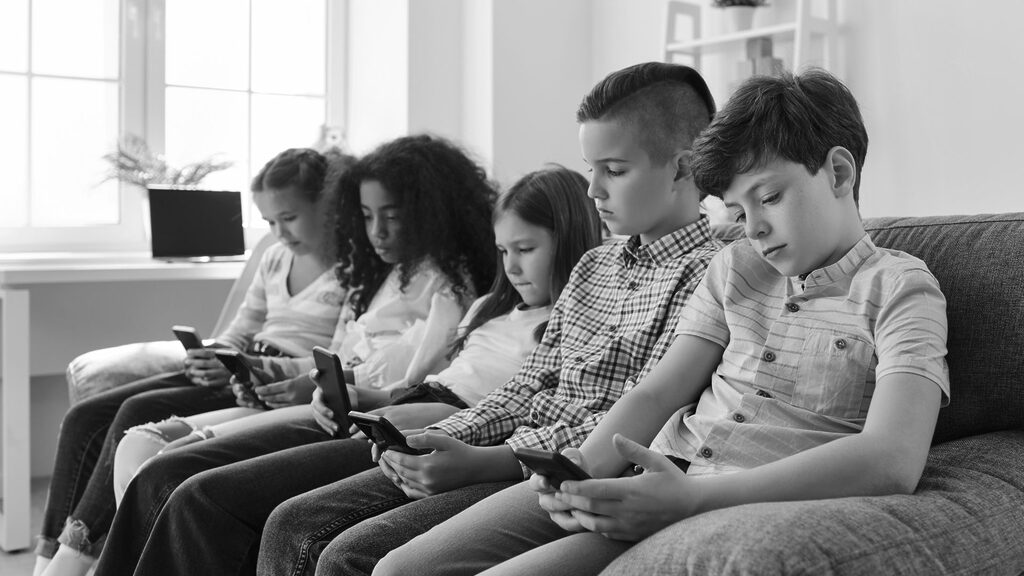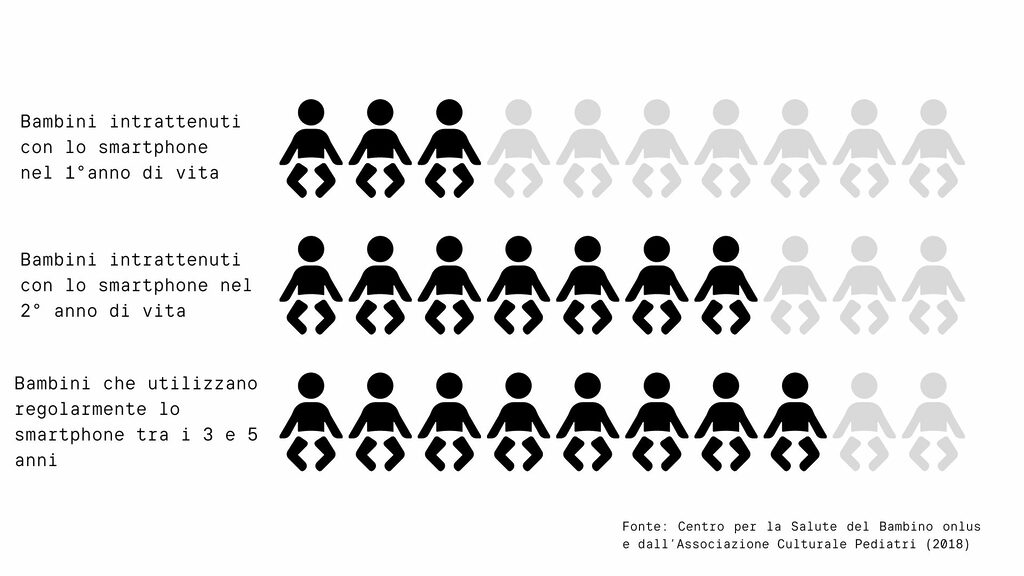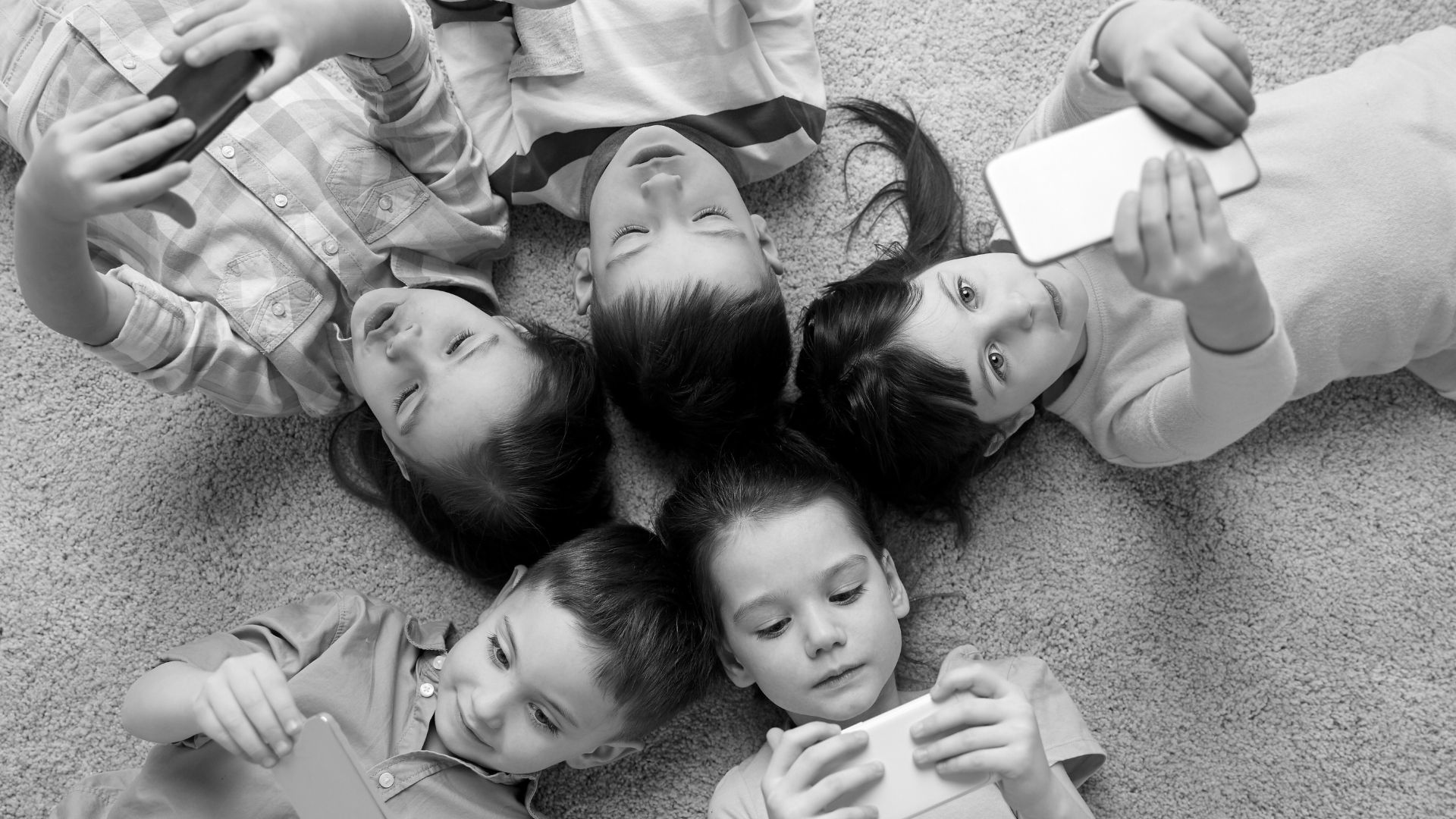In a hybrid world, it is necessary to reflect on the experience of the little ones with digital: a relationship that is not without risks that begins earlier and earlier.
Watching a family dinner, it is not uncommon to notice children with their eyes glued to smartphones and tablets. These devices, perhaps useful for calming momentary agitation, could however turn into the simplest means to manage the natural liveliness of this age. Simple, however, does not mean better, especially when we observe its long-term effects.
Data from a study of 10-14-year-old adolescents from 2010 to 2020, the first to have had a digital childhood, show an increase in anxiety, depression and suicide. In his book “The Anxious Generation”, Jonathan Haidt analyzes this phenomenon as a transition from a “play-based” to a “phone-based” childhood, highlighting an overprotection both in reality as opposed to a complete abandonment in the digital world.
Analyzing the technological and social context is essential to deepen the relationship of digital natives and, perhaps, find new ways to establish a balance and avoid risky drifts.

Child-resistant device
Examining the links between childhood and technology means starting from the ways in which digital objects and environments are designed. Through simple gestures, we can interact with screens, images, and videos that respond with immediate feedback. These devices are the result of extensive research on how to capture and maintain the user’s attention, even those less accustomed to technology.
Sensitive touchscreens, vibrant color palettes, and a variety of sound outputs create a fascinating and immersive experience. These elements, carefully blended, constitute a context that satisfies the curiosity and need for immediacy of the youngest.
Digital relationship and identities
According to research by the non-profit Center for Child Health and the Cultural Association of Pediatricians (2018), 80% of children between 3 and 5 years old know how to use their parents’ cell phones, and that 30% of parents use their smartphones to calm down already in the first year of life, while the percentage rises to 70% from the second year.
To understand the context of early childhood, it is no longer useful to think between “offline” and “online”. In a certain sense, in fact, we could come to think that the digital life of a child begins even much earlier than the “terrestrial” one, if we consider, for example, the story of a pregnancy on social media.

Faced with this new reality, it becomes essential to develop technology integration strategies that promote the balance between digital and real-world experiences. Educating to a conscious use of technology from an early age can help train individuals capable of enjoying the infinite possibilities that this hybrid context can offer.
Risks and recommendations
There is no unanimous consensus among the studies and the indications of the scientific community on the effects on the psychophysical health of children. However, it is necessary to carefully assess the risks in such a vulnerable and delicate group as the first three years of life, especially in terms of brain development.
Some studies (Hutton et al., 2020) have in fact investigated the development of cortical areas of language in preschoolers exposed to intensive and early use of the screen. The authors reported a correlation between intensive use of digital media in early childhood and lower microstructural integrity of white matter tracts, particularly among areas responsible for language production and comprehension.
We can adopt a mindful approach to device use, avoiding primarily using them solely as pacifiers and prioritizing quality applications that support learning. It is also important to monitor the duration of exposure to avoid health issues exacerbated by blue light exposure.
The freedom to explore
Technologies are not bad for development when used wisely, adapting them to age. It is important to reflect on the digitization of identity. Digital natives, unlike previous generations, are born into a world rich in technologies, which requires special attention in the learning and use of these tools. During growth, in fact, digital can lead to benefits such as the development of new skills, improve hand-eye coordination, stimulate the recognition of sounds and images and encourage creativity.
However, use must remain limited and not exclusive. It is essential to combine digital activities with other experiences that promote the development of sensory-motor intelligence by involving all the senses without the mediation of devices. Haidt also suggests increasing the time dedicated to free play and getting used to running small errands from the early years to start orienting oneself in the world.

Digital Detox Design’s commitment is to offer training that reflects on the dynamics of a balanced use of technologies, to promote harmonious and conscious development for everyone. If you are interested in learning more, contact us for more information!
